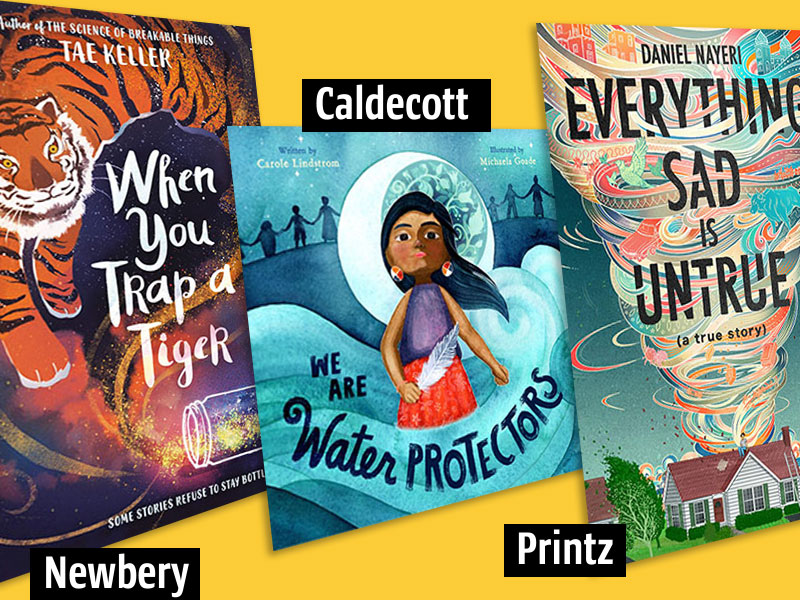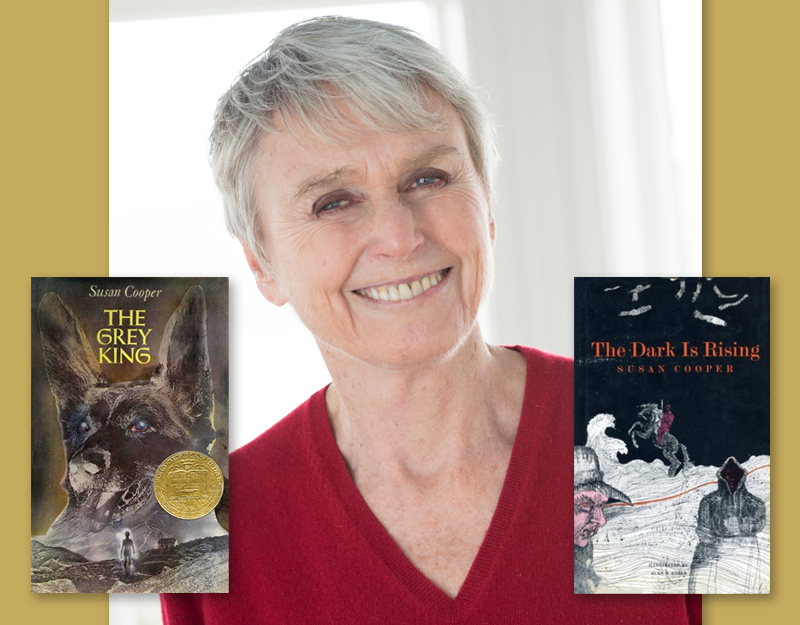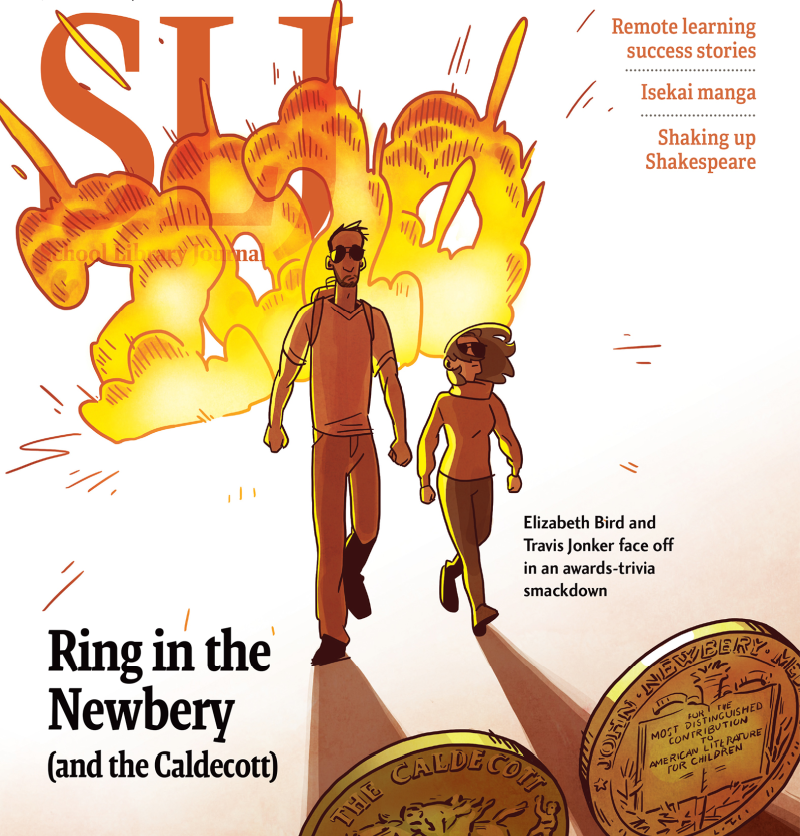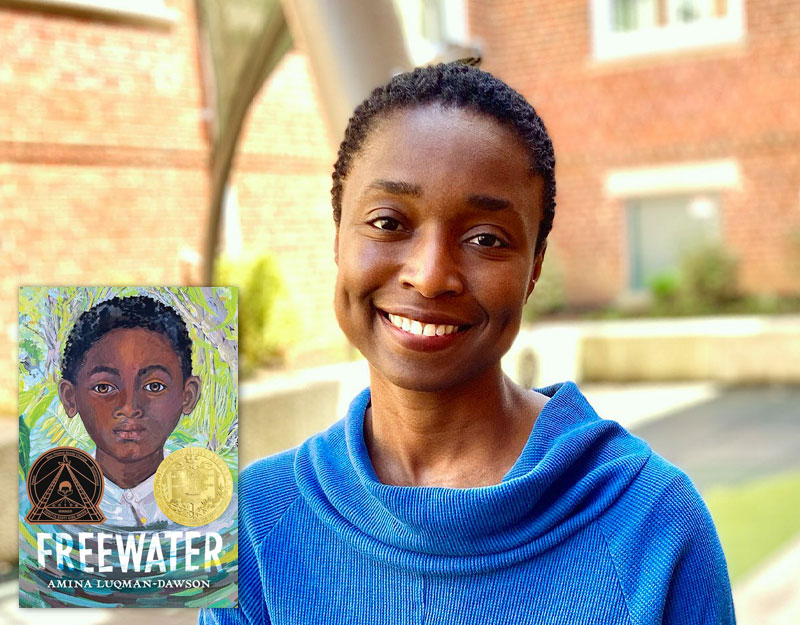For the Record: The Dunderheads
"I have another picture book for your consideration–one with a longer, more independent text…"
That was our first sign: The excerpt
Sign number 2: Jonathan’s analysis. An easy analysis to make, in Jonathan’s case.
Sign number 3: I got on the bandwagon
And sign number 4, …buried in the comments, Jonathan and I note how the discussion went at each of our tables at the Mock Newbery, where it fell off early at his despite enthusiasm, but nearly made the home stretch at mine.
ADVERTISEMENT
ADVERTISEMENT
The Dunderheads is my "Robbed!" title of 2009. The stumbling block for people seems to be: how can it stand up against longer or "weightier" works?
For your consideration:
Frog and Toad at many cookies, one after another.
"You know, Toad," said Frog, with his mouth full,
"I think we should stop eating. We will soon be sick."
"You are right," said Toad. "Let us eat one last cookie, and then we will stop."
Frog and Toad ate one last cookie.
There were many cookies left in the bowl.
"Frog," said Toad," let us eat one very last cookie, and then we will stop."
Frog and Toad ate one very last cookie.
Frog and Toad Together was a 1973 Honor, along with The Witches of Worm and The Upstairs Room in the year that Julie of the Wolves won the Medal. I chose this excerpt for the way Lobel seems to magically build tension and humor by simply repeating a set of phrases with controlled vocabulary. It’s perfect comic timing, as if from a vaudeville stage, but achieved through words on the page, and is exemplary of his tautly structured rhythm throughout…something unmatched in longer works.
Doctor De Soto, the dentist, did very good work, so he had no end of patients. Those close to his own size–moles, chipmunks, et cetera–sat in the regular dentist’s chair.
Larger animals sat on the floor, while Doctor de Soto stood on a ladder.
While the humor in the situation of the opening scene of Doctor de Soto is heightened by the accompanying illustration, it’s inherent in the text. The reader doesn’t even need to know at this point that Doctor de Soto is a mouse. When it becomes important, it is mentioned adeptly,
Being a mouse, he refused to treat animals dangerous to mice, and it said so on his sign.
The characterization achieved through tone is phenomenally potent for such a short text, and the classic folktale structure is given new life for that already-jaded-still-young audience who will perfectly appreciate the nonchalance with which the De Sotos outfox the fox. Doctor De Soto was an honor book along with The Blue Sword, Graven Images, Homesick: My Own Story, and Sweet Whispers, Brother Rush, the year that Dicey’s Song won the Newbery. Nice range! Could the selections that year have been influenced by the previous?:
My suitcases began to purr.
"Your luggage is excessive, sir.
All luggage must be carried flat
and worn disreetly on your hat
or served with mustard on a bun."
Alarmed, I said I hadn’t one.
My suitcases, my fondest hopes
grew small and pale as envelopes.
It’s very hard to excerpt from A Visit to William Blake’s Inn in a way that conveys the breadth and craft of Nancy Willard’s poetry. There’s energy with delicacy, in perfect proportion to the reader’s need for both adventure and comfort. The verses feed the imagination in a way that prose can’t, by heightening emotional associations with images and sounds. "Individually distinct" is a phrase that still marks this book among all other Newbery winners, not just the books of its year, which included the honor books Ramona Quimby, Age 8 and Upon the Head of a Goat. Again, what a range,despite the fact that there’s only two honors!
These books each do something with an intensity unmatched in longer works, making a distinguished delivery to their audiences of well wrought themes in uniquely appealing packages. So does, I think, The Dunderheads.
ADVERTISEMENT
ADVERTISEMENT
I don’t say this to dispute this committee’s choices, but to address the issue many of you and our Mock participants had: how do you weigh a short book against a long one? I suggest taking these three "short" Newbery books and reading them with an eye to the criteria…and even in comparison to their podium-mates. And if you’re still not there with me, then try the $1000 question:
You have $1000.
Do you:
Make a reservation for 10 at Chez Panisse? Or,
Make a reservation for 4 at The French Laundry? Or,
Book a flight and a night’s hotel for 2 in Mexico City, to eat at El Greco taqueria?
Or, if clothes do it better for you than food; do you:
Take it to a blowout sale at the mall and update your entire work wardrobe for a newfound sense of power? Or,
Buy one spectacular head-turning outfit for the Newbery/Caldecott banquet that you’ll only wear once? Or,
Buy yourself an unparalleled cashmere bathrobe?
You get the idea. Each is equally worth $1000, for different reasons each in different measure, even though they all feed the same yen in the end. And the Newbery committee, of course, gets to pick more than one. How nice.
Filed under: Uncategorized
About Nina Lindsay
Nina Lindsay is the Children's Services Coordinator at the Oakland Public Library, CA. She chaired the 2008 Newbery Committee, and served on the 2004 and 1998 committees. You can reach her at ninalindsay@gmail.com
ADVERTISEMENT
ADVERTISEMENT
SLJ Blog Network
Name That LEGO Book Cover! (#53)
Cover Reveal and Q&A: The One and Only Googoosh with Azadeh Westergaard
K is in Trouble | Review
Fighting Public School Book Bans with the Civil Rights Act
ADVERTISEMENT








I’m with you 100%, Nina. Because the Newbery committee (and all the others, for that matter) missed the memo that this was to be an honor book, it’s remaining chances of award attention are the Gryphon Award (given by the Center for Children’s Books to best transitional reader) and the Boston Globe-Horn Book Award. Keeping my fingers crossed. I love this book!
I agree wholeheartedly! The Dunderheads is a wonderfully engaging book on many levels. I recently used it as a read-aloud for 4th-graders who came over for a program. It’s the perfect length for a read-aloud and it’s also funny and intriguing enough to capture the interest of older elementary-age kids.
I guess I was the only one who was bothered that the Dunderheads actually commit a crime (Breaking and entering)? I feel like a prude for pointing it out, and it’s justified in the humorous, over-the-top story. But still, it is a crime.
Breaking and entering in The Westing Game, too. (Not to mention gambling and bombing.)
It seems to me like most of the shorter books that win Newbery honors have more gravitas to them than The Dunderheads, and that’s probably the missing piece (Doctor De Soto excepted, of course). It’s been a stretch for the committees to honor funny books at all, and for them to find a picture book or easy reader that’s funny worthy of the honor may just be asking too much. (Not saying it SHOULD be that way, just I think that probably plays in to what happens there.)
It’s been awhile since I read THE DUNDERHEADS, but it reminded me strongly of Gordon Korman’s SWINDLE. Same idea: A gang of kids breaking into a house to right a wrong, with the kids having just the right combination of special abilities to pull off the plan. Only in SWINDLE, there were some consequences to breaking and entering!
They were two very different books, and you can argue that THE DUNDERHEADS, so much shorter (more economy of language?) and less attempting to be realistic, was the more distinguished writing. I guess I felt like I’d heard the story before, with more exploring of the issues, so I felt like THE DUNDERHEADS was a little flat. Perhaps if I hadn’t recently read SWINDLE (and discussed it with a Homeschoolers’ Book Group), I would have had a different perspective.